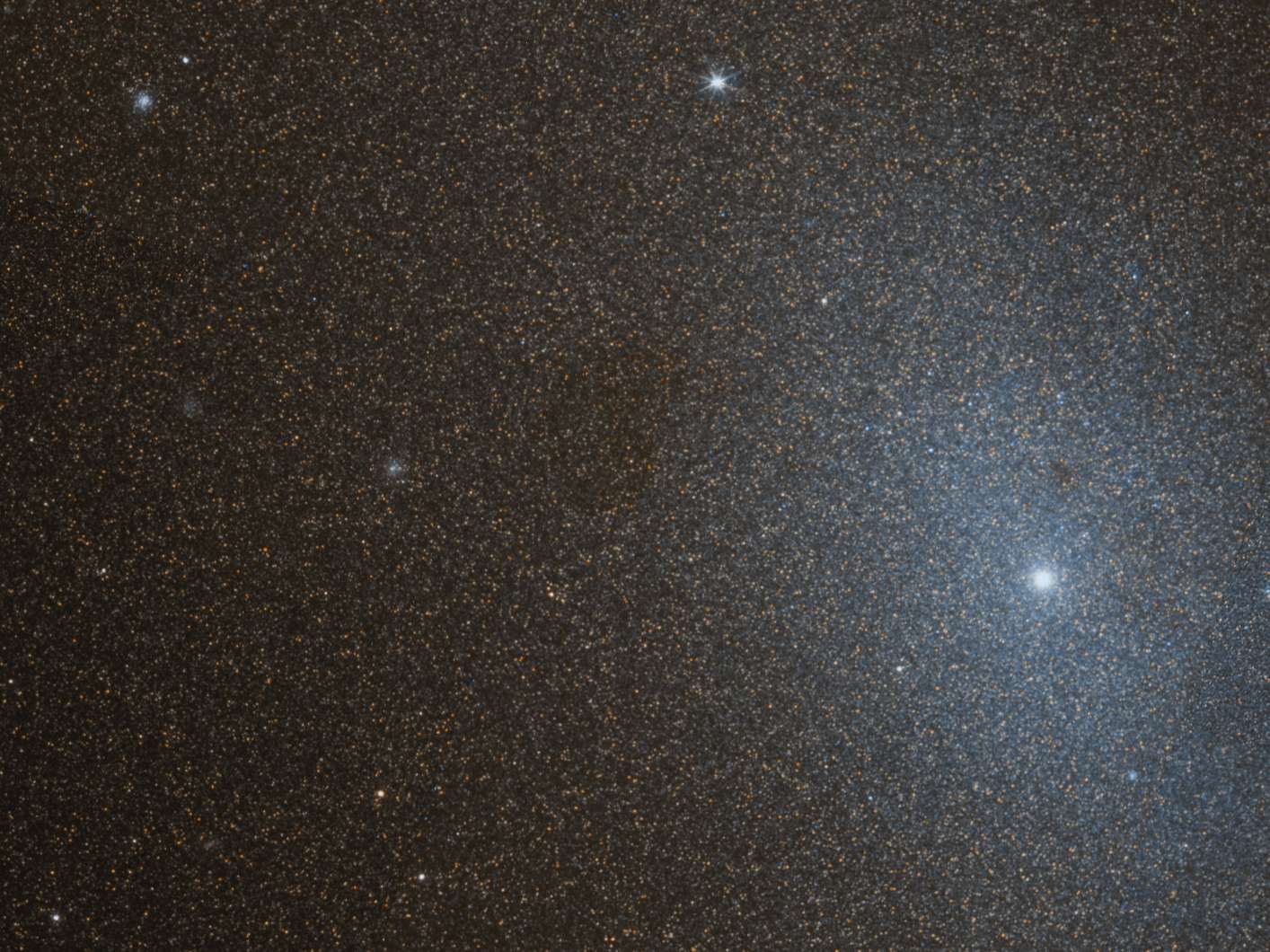M110 | NGC 205 | Edward Young Star | Andromeda | 2,690,000 Light Years Away
Messier 110, also known as the Andromeda II Galaxy, is a satellite galaxy of the larger Andromeda Galaxy (M31). Discovered by Charles Messier in 1773, it is part of the Local Group of galaxies and is located approximately 2.7 million light-years away from Earth. Messier 110 is a dwarf elliptical galaxy, characterized by its smooth and featureless appearance.
With a diameter of about 16,000 light-years, Messier 110 is significantly smaller than the Andromeda Galaxy, which it orbits. The gravitational interaction between the two galaxies has influenced the morphology of Messier 110, leading to its elongated shape. Observations of Messier 110 contribute to the study of dwarf galaxies, their role in galactic systems, and the dynamics of galaxy interactions within the vast cosmic structures of the Local Group.
Messier 110 is visible in small telescopes and is often studied alongside its larger companion, the Andromeda Galaxy. The proximity of Messier 110 to M31 makes it a valuable target for astronomers studying the interactions and gravitational influences between galaxies. The study of dwarf elliptical galaxies like Messier 110 provides insights into the mechanisms shaping the structure and evolution of galaxies within the cosmic neighborhood of the Local Group.

